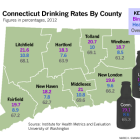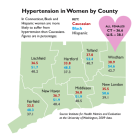Disparities
Preventable Cancer Death Rate Falls In Litchfield And Windham Counties; Comprehensive, Accessible Care Cited
|
“Potentially preventable” cancer deaths plunged in Connecticut over the last decade, according to a federal study, with two rural counties, Litchfield and Windham, experiencing a nearly 49 percent decrease, the best in the nation. Though cancer deaths fell overall in the United States, the trend in rural areas was not universal. In neighboring Massachusetts, for example, preventable cancer deaths rose in non-metropolitan areas. “The disparities were quite stark,” said Dr. Macarena Garcia, a senior health scientist with the Centers for Disease Control and Prevention (CDC) and lead author of the study. In general, cancer patients in rural areas, where residents tend to be older, sicker and poorer, die sooner than urban dwellers, Garcia noted.




